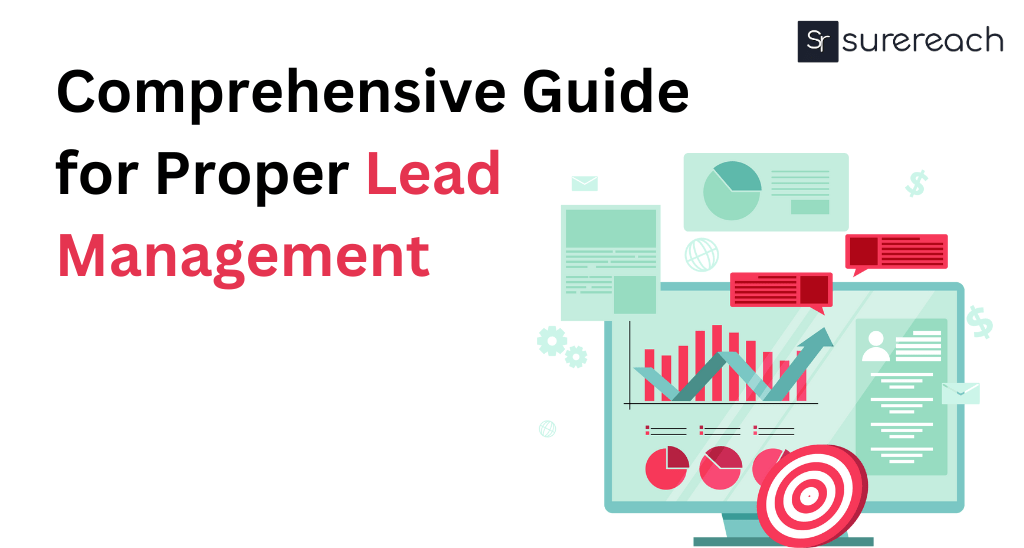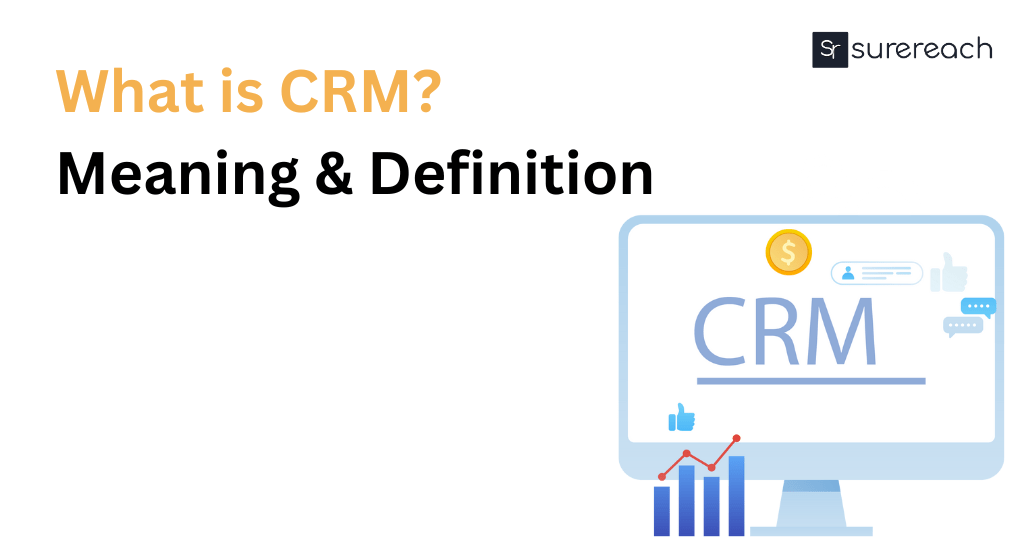What Is Lead?
A lead is a potential customer in the context of digital marketing and sales. This phrase, often known as “prospect,” refers to users who exhibit an interest in a business or service.
Lead management encompasses all of the continuing operations involved in attracting leads (possible customers), qualifying them, and applying focused techniques to convert them into customers.
Lead Management
Lead management is the foundation of the sales process. It’s about gathering qualified leads—those that fit your target personas—and guiding them through the lead lifecycle as quickly as possible. It’s a highly active and ongoing process that requires you to follow up with leads promptly, categorize them effectively, and allocate them to the appropriate sales agents while following up at regular intervals.
Effective lead management streamlines the road to conversion while also:
- Improves the consumer experience- By ensuring that your leads receive appropriate information, you avoid annoying them with irrelevant marketing content.
- Saves you time and resources- Understanding which leads are most likely to convert enables you to direct your marketing and sales efforts where they are most effective.
- Increases profits- By nurturing the appropriate leads with the proper information, you may close more sales and increase your bottom line.
Manage Leads
The lead management process is easier said than done.
- Automate incoming lead qualifying- If you don’t have a lead qualifying structure in place, it’s time to create one. Use your CRM and other technologies to automate this process, identifying the characteristics of a sales-qualified lead (SQL) and segmenting these leads so they can be rapidly delivered to your sales team.
- Do not leave your SQLs waiting- When a SQL asks about or indicates interest in your offerings, disregard the “respond within 24 hours” guideline. To retain momentum and keep them moving through the lead lifecycle, your sales staff should answer as quickly as feasible.
- Reduce time to value- The last thing you want is for leads to bounce because you did not offer them with quick value. Quality top-funnel sales enablement content reveals that you have something to offer, therefore include relevant information for your audience while motivating lead generation using gated content, newsletter sign-up forms, and other techniques. When performing outbound outreach, go one step further and include tailored, value-added advice.
- Play the long game- Not every lead will immediately qualify as an SQL, but that does not imply you should disregard them. Lead scoring has its uses, however, certain leads take longer to respond to your proposals. Invest time and work in all of your leads—some may just be in a lengthier sales cycle than others, and engaging in them might pay off handsomely in the long run.
- Never stop nurturing- Whether your sales team clinched the transaction or not, assist your account managers in discovering methods to extend deals or re-engage leads who have gone cold.
- Measure your efforts- Some lead-generating initiatives will undoubtedly be more effective than others. Actively monitor the performance of your campaigns so that you may make better resource allocation decisions.
Sign up and get 20 credits for free!
We have 3 million+ contacts stored to connect you with prospects all over India
Lead Management Meaning
Lead management is a wide phrase that incorporates several procedures and methods (similar to the term “marketing”). Don’t capture squirrels without a plan—here’s a step-by-step guide for successful lead management.
-
Lead Capture
When a lead contacts your company via a marketing channel (email, website, social media, or paid advertisements), you must capture their information. If you have the right program, it will automatically input and preserve their information. Using a lead management programme or agency will prevent duplicate data, erroneous information, and lost leads.
-
Lead Tracking
Keep track of where the lead came from and where they are in the sales funnel. Understanding where the lead is in the sales funnel will allow you to guide them to the next stage of the process and close the transaction.
-
Lead Qualification
Depending on your industry, there are a variety of lead qualification strategies. For example, lead management software frequently employs AI-powered lead scoring to qualify leads based on their product interest, demographics, and buyer path. This stage is critical because it lets sales representatives determine whether a lead is worth following, saving time and money in the long run.
-
Lead Distribution
Once you’ve qualified the lead, it’s time to allocate it to the appropriate salesperson. Use software or appointment setters to deliver leads to sales representatives. The sooner the sales staff contacts the lead, the more likely they are to become a client. Automating or organising lead delivery is critical for preventing lead leaks.
-
Lead Nurturing
In a perfect world, each lead you collect will become a customer. However, not every lead will be a good fit for you right now. Lead nurturing entails creating a sales pitch that corresponds to the sales funnel stages. For example, someone in the awareness stage may get an email regarding your products and services. In contrast, a person in the decision-making stage may receive a phone call detailing the next steps to become a client. When a lead isn’t ready to become a client yet, it’s critical to cultivate the connection over time until they are.
Lead Management System
- Industry fit: While most lead management systems are very versatile and can be used in a variety of industries, some are more suited to helping B2C businesses than others. Furthermore, several areas (such as banking and healthcare) have stringent compliance standards, which may limit your alternatives.
- Scalability: Can the system handle all of your lead collecting and classification needs, even if the number of your leads is in the hundreds or tens of thousands? Some software has a modular architecture that allows you to add or remove specific capabilities to meet your company’s needs.
- User-friendliness: You should find a balance between customisation and simplicity of use. The solution you chose should be strong and customisable enough to meet your organization’s specific demands without confusing your employees.
- Cost: As your organization expands, you may need to switch to a more expensive plan or pay additional fees for services such as installation or data migration.
Lead Management In CRM
Lead management should be an autonomous machine. Here’s how Surereach can help you save time on lead management and other marketing operations processes:
- Automatically track your leads- Whether you collect leads through forms, adverts, email campaigns, or all of the above, you can automate the process so that lead information is immediately sent to your CRM or spreadsheet, making it easier than ever to follow your leads.
- Send out personalized welcome notes- When a lead inputs their information for the first time, a sales team member does not need to be on the opposite side of the screen to greet them. Automatically send a welcome email or text message according to their position or interests. Marketing automation may help you do this.
- Run nurturing campaigns automatically- Automation may also help you run lead nurturing efforts by automatically providing leads stuff like discounts and event invites throughout the buyer’s lifecycle.
Lead management does not have to be a difficult and time-consuming process. Use Surereach to automate your lead management process, giving you more time to create the ideal plan for capturing your prospects.








Sanidhya Arora
More posts by Sanidhya Arora